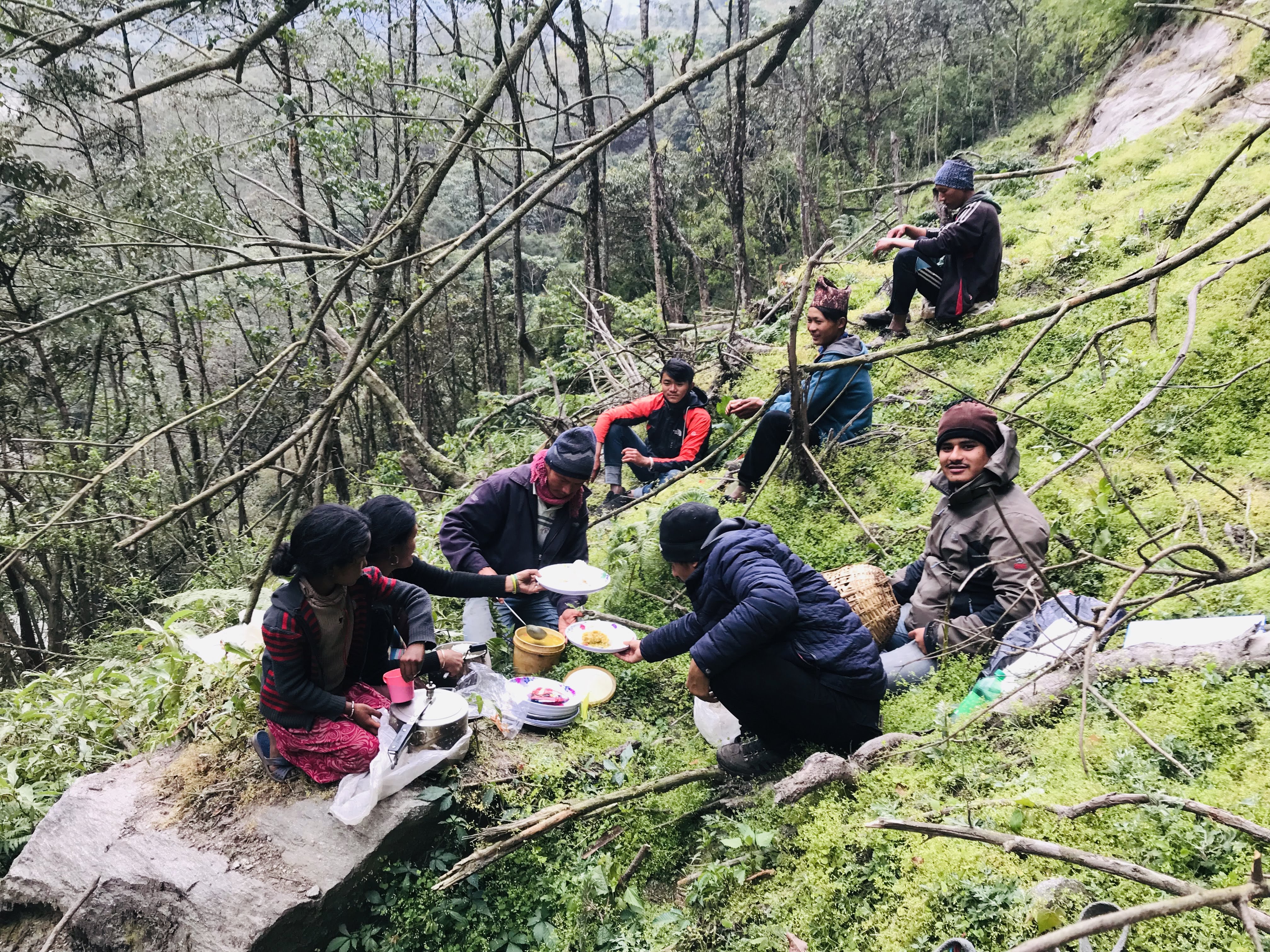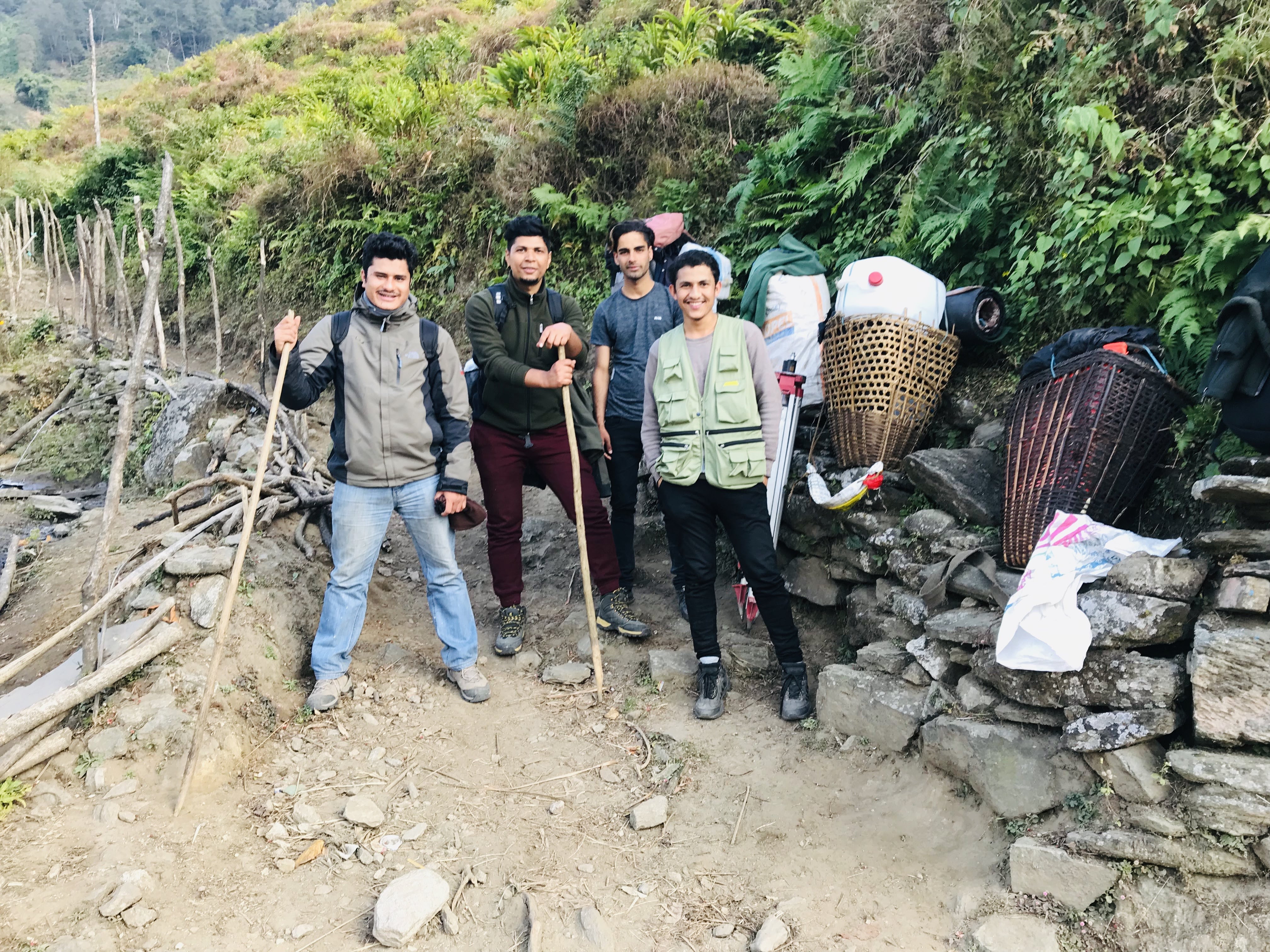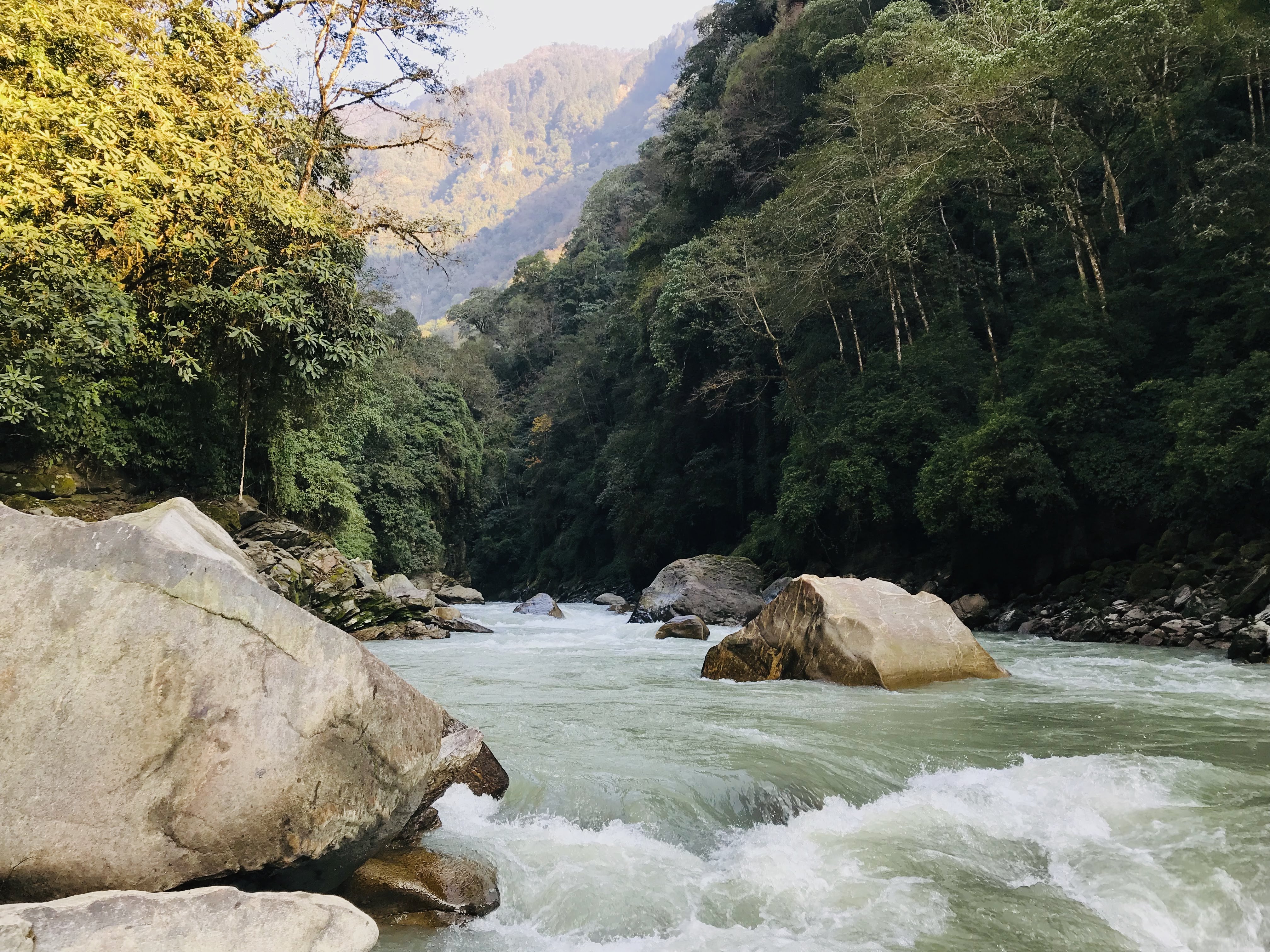In the Footsteps of Rivers and Rocks: A Geophysicist's Himalayan Story
After completing my Master's degree in Geology, I stepped out of the academic world and into the rugged terrain of Nepal's high mountains. I was excited, nervous, and ready to apply my knowledge in the field. My first role was with a geophysical consulting company, where I began my journey conducting surveys for critical infrastructure projects like hydropower plants, dams, and bridges.
Working as a geophysicist in Nepal isn't your typical 9-to-5 job. It meant waking up before dawn, hiking for hours—often in extreme conditions—and carrying sensitive instruments over narrow trails and rocky cliffs. Our teams were small but resilient, and every day brought a new challenge, whether it was technical, logistical, or environmental.

In the photo above, I was setting up a resistivity meter in a remote gorge. We had to cover the equipment with plastic to protect it from constant drizzles and jungle moisture. Vegetation was thick, the terrain steep, and often we had to troubleshoot using only what we could carry in our packs.
Despite the challenges, I found the work deeply fulfilling. There was something incredibly grounding about being surrounded by nature's raw beauty while working on projects that could change lives—bringing electricity to villages or making remote travel routes safer.

One of the most memorable parts of this journey was our connection with the local communities. Many of the dam and hydropower sites were hardly accessible by road, so we hired local porters to help us carry equipment. These porters weren't just helpers—they were vital to the success of our operations. In many cases, their family members joined to cook meals for the whole team.
Meals like the one above were something special. Everyone—from engineers to porters to cooks—sat together on the forest floor, passing plates and sharing stories. It was humbling, unifying, and unlike anything I'd experienced before. These communal lunches in the mountains taught me not just about geophysics, but about teamwork, humility, and respect.

Reaching some of these sites took days. On one project, we hiked for eight straight days through the hills, forests, and river valleys. Every step brought us deeper into remote territory—far from electricity, roads, or mobile signals. Carrying instruments and personal gear on our backs or in bamboo baskets, we pushed ourselves physically and mentally.
I lost a noticeable amount of weight during that project, but gained something even more valuable: resilience and perspective. Every blister, every cold morning, every slippery trail was part of a once-in-a-lifetime experience that deepened my connection to my profession and this incredible country.

At the end of each trip, there were moments of silence like this one, by a rushing river in the heart of the forest, where everything made sense. The sound of water carving through stone, the untouched wilderness around us, and the quiet reward of purpose after long workdays.
These rivers are more than just hydropower sources—they are lifelines for villages, ecosystems, and histories. And to stand by them, studying their secrets and helping shape their future, is a privilege I will never take lightly.
This job taught me more than just geophysics. It taught me teamwork, adaptability, and patience. It showed me the importance of listening to local communities and learning from their knowledge of the land. And above all, it gave me a sense of purpose.
This chapter of my life was raw, real, and transformative. I'll always carry these stories—and the friendships forged in mud, mist, and mountains—with me.
I'll be sharing more about specific projects and experiences—including the tools we used, the science behind our work, and the stories of the people we met along the way—in upcoming posts.
Thank you for reading. More field tales coming soon.
Comments